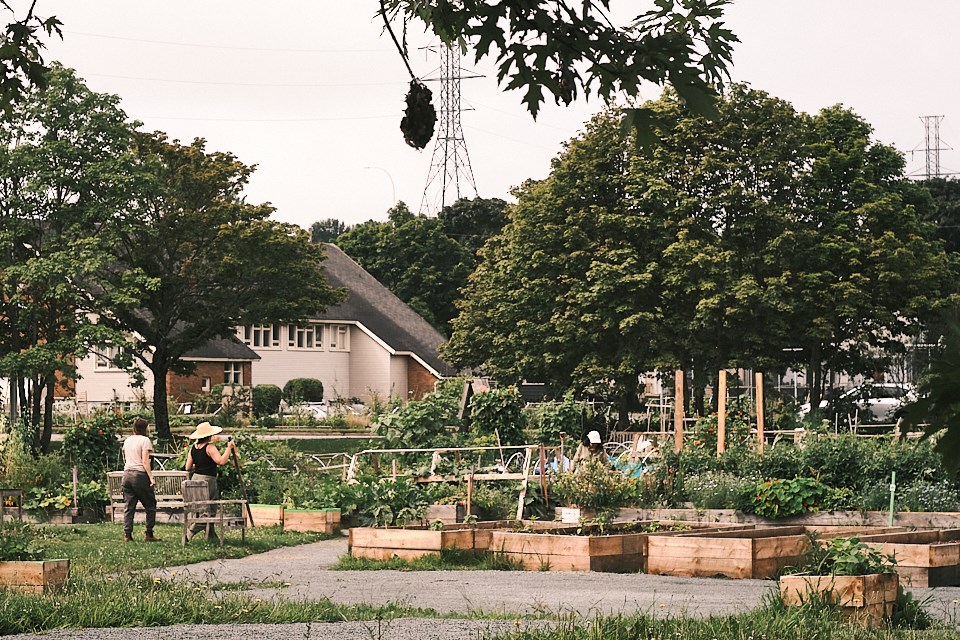Common Roots Urban Farm is growing into its new BiHi home
Posted Aug 11, 2021 04:44:00 PM.
Cities are full of them: patches of grass, abutting roads and highways, stranded by the planning process and, often, their value and potential neglected and overlooked.
The BiHi Park used to be one such patch of grass before the Common Roots Urban Farm (CRUF) moved in a few years ago. And there, amidst planter boxes full of flowers and veggies, they’ve built something that looks and feels like a bit of a highway oasis.
“It’s bigger and more pleasant than people expect, given its location,” says Sara Burgess, the farm coordinator at the BiHi Park spot. “It was really an unused triangle of land — like a very unused triangle of land. And now, there’s so much growing. We have volunteers two days a week, we have groups a few days a weeks and other programming. So it’s now very up and running.”
The site — admittedly a downsize to a few dozen plots from around 200 that they had at their old location at Robie and Bell — has several functions: there are community plots that can be rented out for the year, as well as market plots (which grow produce that CRUF sells at a weekly market) and communal plots. It’s an eclectic mix, in terms of both function and flora, and the intended outcome is to help people connect in ways they might not have done otherwise.
“We want the connections with other people, and we want the connections to growing our food,” she says. A year and a half of COVID revealed many of the ways people were lacking in both, she adds, and CRUF — and community gardens and farms across the country, really — has been incidental beneficiaries, in a way, as a result.
 Volunteers working at Common Roots Urban Farm's BiHi park location on Tuesday, August 10. By Kieran Delamont for HalifaxToday
Volunteers working at Common Roots Urban Farm's BiHi park location on Tuesday, August 10. By Kieran Delamont for HalifaxTodayIn some ways, Burgess says, they are still figuring out just how to manage that. Community garden plots were hard to come by for a lot of folks before the pandemic; the COVID gardening boom has made them near impossible to secure. (CRUF has over 100 people on the waitlist, Burgess says.) The pandemic also threw a wrench in what would’ve been their sophomore year at the new location — a year to sort out what their move would mean for them and the people they serve; a year to figure out what kind of community had truly taken root there, if you will.
“We aren’t as central, and because of the COVID year, we’re just figuring out who the people we’re working with are, who our community is,” Burgess says. “There are a lot of things and ways that we worked that we want to hold on to.
“But yeah, it’s definitely an adjustment,” she says. “We’re learning to work with the space. We crammed as much as we could into this tiny triangle.”
Crammed or not, the farm site is a hub of activity, whether that’s volunteers working on the existing plots or building new ones (they recently got funding from the province to make their site more accessible for community members who use wheelchairs or are blind), right down to the many bees buzzing around the perennials and the flower beds, which were “putting on a good show this week,” thanks to some recent wet weather.
“People have been very grateful for the opportunity, early in the season, when we were able to be outside after being locked down,” Burgess says. “People were so happy just to be weeding and chatting with each other. Just to be with other people, it has made a big difference.”








